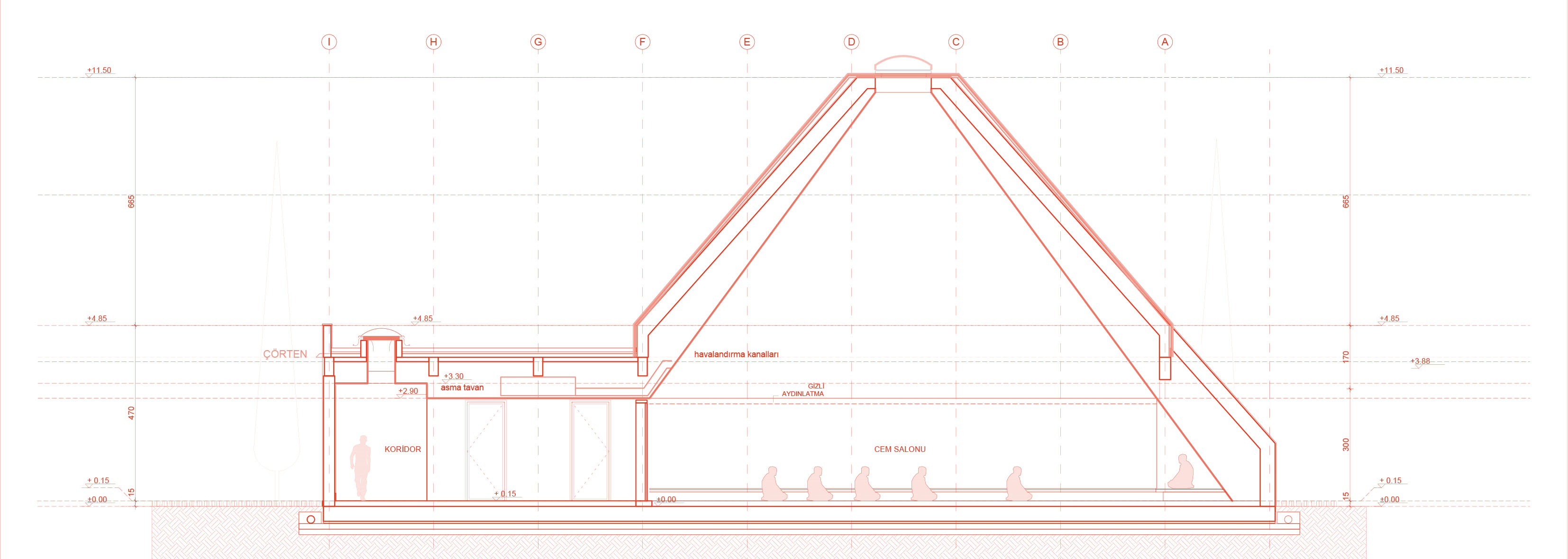BALÇOVA CEMEVİ
İzmir︎ 2021 ︎ Construction Area: 1118 m2 ︎ Site: 1571 m2 ︎ Religious ︎ Metehan Kahya, Nevzat Sayın, Sami Metin Uludoğan, Serheng Dellal



The cemevis, which were the places of worship of the Alevis who tried to live in secret in the geography of Turkey, did not bear any sign of being a cemevi as a mass effect. But even if the mass was illegible, the interior setup had distinctive features. The overlapped pyramidal roof cover, called “Tütekli Ceiling”*, was considered the characteristic cover system of cemevis, even if it was in other types of buildings, and was covered with a two or four-slope roof like other structures, in a way that would not be visible from the outside. How should these traditional places of worship, which are traditionally maintained in the village and closed to non-Alevis, should be built in the cities in a legible way, under new conditions, for the Alevis who came to the cities with the migration from the countryside to the cities in the 1950s? The Büyük Ocak Djemevi building in the Onar Village of Malatya from the 13th century became our muse; We started with the question of what would be the exterior of a structure with this interior, if it could be, that would express this interior legibly. The four-curved truncated pyramid, which clearly carries the pyramidal form of the tucked ceiling, transformed the mass into the form we seek, as it points both to the concept of "four doors", which is important for Alevis, and the connection between the sky and the light that enters the "square", whose walls we cannot open windows due to its closedness.The library and the soup kitchen were also covered with truncated pyramids, with the sky above them, although with different sizes and shapes from their plans. The inner courtyard, which connects all these units, is completely closed to the road and can be opened towards the park when desired, was shaped based on the circular form of the Alevi semah made by turning. Kızılbaş, which is one of the general descriptive adjectives of Alevis and is sometimes used as a negative charge by non-Alevis, was the reason why we built a red structure out of spite. Our concern was not to produce a tradition, but to do something new by clinging to it, and now, although the structure we have obtained with all these simple and plain reasoning is based on traditional themes, it seems to be a timeless structure as well as being a structure of the present.








